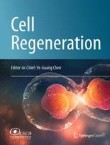Leading editors:
Dr. Fengquan Zhou (Zhejiang University School of Medicine, China)
Dr. Saijilafu (Zhejiang University City College, China)
Most late onset neurological diseases result in synaptic function deficits, neuronal process (axon and dendrites) degeneration and the death of neurons, which lead to permanent loss of sensory, motor or cognitive functions. Therefore, neural regeneration, including neural protection, axon regeneration and the replacement of dead neurons, is the most effective therapeutic strategy for treating neurodegenerative diseases and various neural injuries. During the past decade, great effort has been devoted to reveal the cellular and molecular mechanisms underlying disease/injury-induced neural degeneration and cell death, and identify novel and effective strategies for neural protection, repair and regeneration. In addition, the fast development of new techniques, such as single cell multiomics, AI-based big data analysis, and crispr-based gene editing, has revolutionized the biomedical research, including neural regeneration. As a result, many genes and pathways have been identified for enhanced neural protection and axon regeneration. iPSC-induced neuronal differentiation and/or glial-neuron reprogramming have been explored to replace lost neurons in various neurodegenerative disease models.
To highlight recent development in the neural regeneration field, Cell Regeneration is currently inviting submissions to its upcoming special issue on neural regeneration. The goals of the special issue are to 1) introduce major advances in the field, 2) present current challenges that need to be addressed, and 3) encourage researchers in other tissue regeneration fields for seeking collaborative opportunities.
Original research, Methodology and Review articles, including (but not limited to) the following areas are all welcome:
- Novel genes or pathways enhancing neuronal survival or axon regeneration after neural injury or in neurodegenerative diseases
- Roles of glial cells or other non-neural cells within the microenvironment in neural regeneration
- Exploring neural regeneration using single cell/nucleus multiomics with spatiotemporal dimensions
- Imaging neural regeneration: live cell imaging with various biosensors, 3D imaging of neuronal morphology during injury or disease process
- Roles of metabolic changes in neural regeneration
- iPSC-induced neuronal differentiation into specific neuronal types or glial-neuron reprogramming
- Neural organoid models
The Editor-in-Chief of Cell Regeneration will review all submissions prior to peer review and may reject any of them that do not fit the scope of the journal or do not meet the journal's standards for peer review. All articles of Thematic Series will undergo full, independent peer review, in line with the journal's ethical and editorial policies, outlined in its submission guidelines. There is no guarantee of acceptance, even for commissioned or invited papers. The journal’s Editor-in-Chief has a final authority on editorial content.
